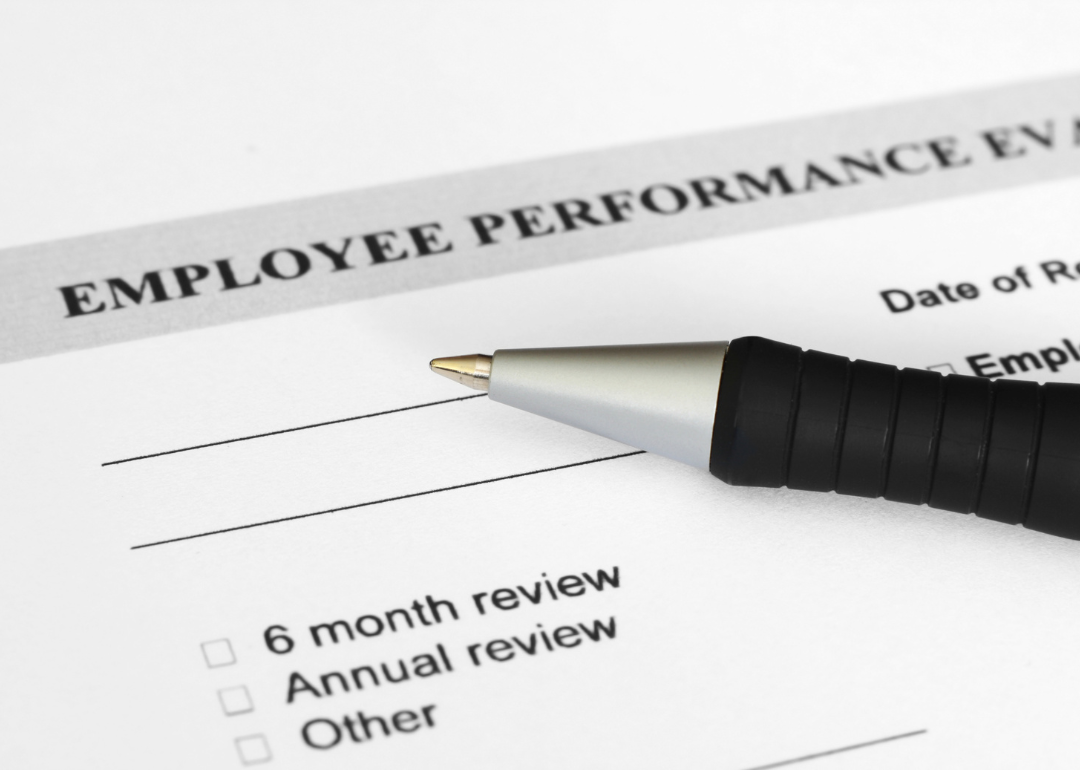Business
12 metrics employers are using today to measure employee engagement
Published
1 year agoon

Modern companies understand that engaged employees—those who feel a positive mental and emotional connection to their work, their teams, and their organization—build better office cultures and yield higher performance.
Employers can improve employee engagement by offering rewards like raises and promotions for excellent work. Efforts to make employees feel heard and valued also help keep workers connected to each other and the company. Sending inconsistent messaging about core company values or building one-way, top-down internal communications can easily hinder these efforts, and leave employees feeling disconnected or disregarded.
The Gallup polling company surveys companies around the world and honors those whose employees are the most engaged with a Gallup Exceptional Workplace Award. At top organizations, about 71% of employees are engaged—far above the 15% global average engagement level and the 35% average in the U.S.
ABC Supply, a Wisconsin-based building supply company with more than 17,000 employees, is one of just two companies that have won Gallup’s award every year since it was created in 2007. The company says its employees’ engagement is crucial to its growth and success.
Building a strong and engaged workplace culture takes work and often starts with clear and open lines of communication between leadership and employees. To help better understand employee perspectives, Nextiva examined Gallup’s Q12 Employee Engagement Survey and identified some of the measures that people use to determine their satisfaction and engagement with their jobs—whether working in person, hybrid, or fully remote.
![]()

Cozine // Shutterstock
#1. I know what is expected of me at work.
– Foundational level: Basic needs
According to Gallup’s survey, just half of all employees globally understand what their employers expect of them at their workplace, and how their performance helps co-workers and the organization as a whole. Gallup’s survey shows that organizations that can boost the ratio of employees who understand what is expected of them at work to 80% can cut employee turnover by 22%, reduce safety incidents by 29%, and enhance productivity by 10%.

Roman Samborskyi // Shutterstock
#2. I have the materials and equipment I need to do my work right.
– Foundational level: Basic needs
Employees who don’t have what they need to do their work cannot be productive. It’s common to associate employees’ needs with tools or equipment. But workers also have less tangible needs, like access to information that makes it easier to get work done.
Surveys show that one in three employees globally agree they have what they need to do their job. Organizations that can double that ratio could potentially see an 11% increase in profitability. Equipping employees with their basic needs can reduce safety incidents by 35% and improve their output by 28%. Managers cannot simply assume they understand what their teams need; they must find out what people need to do their work effectively.

fizkes // Shutterstock
#3. At work, I have the opportunity to do what I do best every day.
– Foundational level: Individual contribution
Most workplaces include a wide range of people with different personal and work-related strengths, skills, and abilities. Employers who let employees use those talents can help them feel fulfilled and give them a sense of purpose while also improving productivity and attracting and retaining other great workers.
Gallup’s survey revealed that approximately 33% of workers strongly agree across the globe that they have the chance to do what they do best each day. Employers who create an environment where employees can leverage their skills could increase customer engagement scores by 6% and profitability by 11%. Furthermore, doubling this ratio can cut turnovers down by 30% and reduce safety incidents by 36%.
Exceptional managers get to know their team members personally and allow them to showcase their unique value through their work.

Arman Novic // Shutterstock
#4. In the last seven days, I have received recognition or praise for doing good work.
– Foundational level: Individual contribution
An essential part of employee engagement is ensuring that people feel valued. Employees who do not feel valued in their workplaces are much more likely to quit their jobs. Recognizing employees’ good work also shows other employees what success looks like. Gallup’s survey reveals that 25% of workers strongly agree that they had been commended or recognized for their hard work the previous week.
If employers can increase that ratio to 60%, quality would improve by 28%, absenteeism would decrease by 31%, and shrinkage would reduce by 12%. The best way to apply this strategy would be to create an environment rich in recognition, with multiple sources of appreciation.

Anel Alijagic // Shutterstock
#5. My supervisor, or someone at work, seems to care about me as a person.
– Foundational level: Individual contribution
Many employers try to avoid being perceived as “soft” by their employees. Still, at every level of an organization, employers need to regard their employees as the organization’s backbone. People who feel cared for and valued are more likely to be innovative and take the initiative. Employees who feel connected to their organization also make great ambassadors for the workplace. Surveys show that 40% of employees strongly agree that their supervisor or colleague shows concern for them as a person.
Improving that ratio to 80% can do a world of good for any organization, which may see that improvement bring an 8% uptick in customer engagement scores, a 46% decrease in safety issues, and a 41% decrease in absenteeism.
The personal touch of showing someone you care about them cannot be manufactured. However, by increasing one-on-one interactions and acknowledging achievements, managers may create environments where employees feel safe and cared for at work.

Ground Picture // Shutterstock
#6. There is someone at work who encourages my development.
– Foundational level: Individual contribution
According to data from the Gallup survey, people leave jobs most frequently for lack of professional advancement chances. But it’s not always the workers’ fault. Some are ready to learn, grow, and have skills to move up but don’t know how to navigate that phase of their careers.
Employers who provide guidance through mentoring, engagement, visibility, or task assignments are highly regarded and encourage higher levels of loyalty. The surveys show that 30% of employees strongly agree that a colleague at work supports their personal development. Organizations can see improvements in customer engagement ratings of 6%, profitability of 11%, and absenteeism reduction of 28% by raising this ratio to 60%.
Managers who can coach employees to learn, grow, and take on new challenges have better results, especially in retaining staff.

FS Stock // Shutterstock
#7. At work, my opinions seem to count.
– Foundational level: Teamwork
Older work models often had managers who were expected to know it all. More modern management involves constant dialogue with colleagues to consider all options before deciding on the best course of action, and to ensure everyone’s views are heard. Gallup data shows that 25% of employees feel listened to when expressing their opinions. It is possible for organizations to reduce turnover and safety incidents, and to enhance productivity by as much as 10% if they can double that ratio. Workers’ input can identify new opportunities and help employees connect with each other and their managers.

fizkes // Shutterstock
#8. The mission or purpose of my company makes me feel my job is important.
– Foundational level: Teamwork
Everyone wants to know that their effort has a more significant meaning and that their job isn’t just a job. A sense of purpose is a critical element in attracting and retaining staff. Global surveys revealed that about 33% of employees strongly agree that the direction and purpose of their organization made their jobs feel more critical.
If organizations focus on this metric and double this ratio, key performance metrics like absenteeism and patient safety could be improved. Additionally, this can translate to a 19% boost in work output. Good leaders identify ways to show every employee how their role fits and supports the organization’s mission. In addition, opportunities for employees to share moments when they felt especially connected to the mission can inspire others and make the collective sense of purpose more concrete.

Ground Picture // Shutterstock
#9. My associates or fellow employees are committed to doing quality work.
– Foundational level: Teamwork
Interconnected modern workplaces require team members to depend on each other heavily to do their jobs. But a team is only as strong as its weakest member, and if people think a teammate doesn’t share the same dedication, morale can tumble. According to a Gallup study, one-third of employees strongly believe that their co-workers are devoted to producing high-quality work. By simply doubling this ratio, businesses can trim turnover and absenteeism by 31%, raise profits by 12%, and enhance customer engagement ratings by 7%. A transparent system of accountability for individuals and the team can ensure clear performance measures and that everyone understands their interdependence.

fizkes // Shutterstock
#10. I have a best friend at work.
– Foundational level: Teamwork
When workers feel connected to their co-workers, they make better business judgments. According to surveys, 30% of workers firmly agree that they have the closest buddy at work. Organizations could experience 28% fewer safety incidents, 5% higher customer engagement scores, and 10% higher profit if that ratio increased to 60% or above. A relaxed environment created by excellent managers can foster workplace friendships.

alexskopje // Shutterstock
#11. In the last six months, someone at work has talked to me about my progress.
– Foundational level: Growth
Career growth is significant to employees. Performance evaluations are vital—whether formal or informal—and can help align an employee’s self-perception with their actual work performance. Discussing workers’ strengths and weaknesses can help them feel understood and identify ways they can contribute more effectively. Gallup surveys reveal that one-third of employees worldwide strongly agree that a colleague at work has checked up on their progress in the last six months. By pushing this ratio to about 66%, organizations can materially see a 38% drop in safety incidents, a 28% reduction in absenteeism, and an 11% increase in profit.

fizkes // Shutterstock
#12. This last year, I have had opportunities at work to learn and grow.
– Foundational level: Growth
Constantly keeping workers learning is a great way to sustain employee motivation and momentum. People are more likely to stay in organizations where they feel forward motion in addition to personal and professional progress. According to studies, only 33% of employees strongly agree that they have the opportunity to learn and develop at work. The survey further revealed that by improving this ratio to 66%, organizations could see 39% lower absenteeism, a 36% reduction in safety incidents, and a 14% spike in productivity.
Encouraging employees to develop themselves makes the environment conducive to work. In this type of environment, employees don’t feel the need to skip work, and productivity and profits increase. Offering employees opportunities to learn and grow through company programs or other forums helps keep them engaged and fulfilled.
This story originally appeared on Nextiva and was produced and
distributed in partnership with Stacker Studio.
Founded in 2017, Stacker combines data analysis with rich editorial context, drawing on authoritative sources and subject matter experts to drive storytelling.
You may like
Business
Cashiers vs. digital ordering: What do people want, and at what cost?
Published
3 days agoon
April 26, 2024
You walk into a fast-food restaurant on your lunch break. You don’t see a cashier but instead a self-service kiosk, a technology that is becoming the new norm in eateries across the country. The kiosks usually offer customers a menu to scroll through and pictures of meals and specials with prompts to select their food and submit their payment in one place.
Self-service kiosks are big business. In fact, the market for self-service products is expected to grow from a $40.3 billion market value in 2022 to $63 billion by 2027, according to a report from BCC Research. Consumers do have mixed opinions about the kiosks, but about 3 out of 5 surveyed consumers reported that they were likely to use self-service kiosks, according to the National Restaurant Association. The technology, while expensive, can boost businesses’ bottom lines in the long run.
Task Group summarized the rise in digital ordering over the past couple of years, its acceptance among customers, and a cost analysis of adopting the technology.
Self-service kiosks—digital machines or display booths—are generally placed in high-traffic areas. They can be used for different reasons, including navigating a store or promoting a product. Interactive self-service kiosks in particular are meant for consumers to place orders with little to no assistance from employees.
The idea of kiosks isn’t new. The concept of self-service was first introduced in the 1880s when the first types of kiosks appeared as vending machines selling items like gum and postcards. In the present age of technology, the trend of self-service has only grown. Restaurants such as McDonald’s and Starbucks have already tried out cashierless technology.
From a business perspective, the kiosks offer a huge upside. While many employers are looking for workers, they’re having a hard time finding staff. In the midst of the COVID-19 pandemic, employers struggled with a severe employee shortage. Since then, the problem has continued. In 2022, the National Restaurant Association reported that 65% of restaurant operators didn’t have enough workers on staff to meet consumer demand. With labor shortages running rampant, cashierless technology could help restaurants fill in for the lack of human employees.
The initial investment for the kiosks can be high. The general cost per kiosk is difficult to quantify, with one manufacturer estimating a range of $1,500 to $20,000 per station. However, with the use of kiosks, restaurants may not need as many cashiers or front-end employees, instead reallocating workers’ time to other tasks.
In May 2022, the hourly mean wage for cashiers who worked in restaurants and other eating establishments was $12.99, according to the Bureau of Labor Statistics. Kiosks could cost less money than a cashier in the long run.
But how do the customers themselves feel about the growing trend? According to a Deloitte survey, 62% of respondents report that they were “somewhat likely” to order from a cashierless restaurant if given the chance to do so. The same survey reported that only 19% of respondents had experience with a cashierless restaurant.
What would it mean for society if restaurants did decide to go completely cashierless? Well, millions of positions would likely no longer be necessary. One report suggests 82% of restaurant positions could be replaced by robots, a prospect making automation appealing to owners who can’t find staff to hire.
Due to the ongoing labor shortage, employers have tried raising employee wages. Papa John’s, Texas Roadhouse, and Chipotle were among the restaurant companies that increased employee pay or offered bonuses in an attempt to hire and retain more workers. Meanwhile, some companies have decided to use technology to perform those jobs instead, so that they wouldn’t have to put effort into hiring or focus their existing staff on other roles.
Story editing by Ashleigh Graf and Jeff Inglis. Copy editing by Tim Bruns.
![]()
Founded in 2017, Stacker combines data analysis with rich editorial context, drawing on authoritative sources and subject matter experts to drive storytelling.

It’s well-documented that the surest, and often best, return on investments comes from playing the long game. But between stocks and real estate, which is the stronger bet?
To find out, financial planning firm Wealth Enhancement Group analyzed data from academic research, Standard and Poor’s, and Nareit to see how real estate compares to stocks as an investment.
Data going back to 1870 shows the well-established power of real estate as a powerful “long-run investment.” From 1870-2015, and after adjusting for inflation, real estate produced an average annual return of 7.05%, compared to 6.89% for equities. These findings, published in the 2019 issue of The Quarterly Journal of Economics, illustrate that stocks can deviate as much as 22% from their average, while housing only spreads out 10%. That’s because despite having comparable returns, stocks are inherently more volatile due to following the whims of the business cycle.
Real estate has inherent benefits, from unlocking cash flow and offering tax breaks to building equity and protecting investors from inflation. Investments here also help to diversify a portfolio, whether via physical properties or a real estate investment trust. Investors can track markets with standard resources that include the S&P CoreLogic Case-Shiller Home Price Indices, which tracks residential real estate prices; the Nareit U.S. Real Estate Index, which gathers data on the real estate investment trust, or REIT, industry; and the S&P 500, which tracks the stocks of 500 of the largest companies in the U.S.
High interest rates and a competitive market dampened the flurry of real-estate investments made in the last four years. The rise in interest rates equates to a bigger borrowing cost for investors, which can spell big reductions in profit margins. That, combined with the risk of high vacancies, difficult tenants, or hidden structural problems, can make real estate investing a less attractive option—especially for first-time investors.
Keep reading to learn more about whether real estate is a good investment today and how it stacks up against the stock market.
![]()

Wealth Enhancement Group
Stocks and housing have both done well
REITs can offer investors the stability of real estate returns without bidding wars or hefty down payments. A hybrid model of stocks and real estate, REITs allow the average person to invest in businesses that finance or own income-generating properties.
REITs delivered slightly better returns than the S&P 500 over the past 20-, 25-, and 50-year blocks. However, in the short term—the last 10 years, for instance—stocks outperformed REITs with a 12% return versus 9.5%, according to data compiled by The Motley Fool investor publication.
Whether a new normal is emerging that stocks will continue to offer higher REITs remains to be seen.
This year, the S&P 500 reached an all-time high, courtesy of investor enthusiasm in speculative tech such as artificial intelligence. However, just seven tech companies, dubbed “The Magnificent 7,” are responsible for an outsized amount of the S&P’s returns last year, creating worry that there may be a tech bubble.
While indexes keep a pulse on investment performance, they don’t always tell the whole story. The Case-Shiller Index only measures housing prices, for example, which leaves out rental income (profit) or maintenance costs (loss) when calculating the return on residential real estate investment.

Wealth Enhancement Group
Housing returns have been strong globally too
Like its American peers, the global real estate market in industrialized nations offers comparable returns to the international stock market.
Over the long term, returns on stocks in industrialized nations is 7%, including dividends, and 7.2% in global real estate, including rental income some investors receive from properties. Investing internationally may have more risk for American buyers, who are less likely to know local rules and regulations in foreign countries; however, global markets may offer opportunities for a higher return. For instance, Portugal’s real estate market is booming due to international visitors deciding to move there for a better quality of life. Portugal’s housing offers a 6.3% return in the long term, versus only 4.3% for its stock market.
For those with deep enough pockets to stay in, investing in housing will almost always bear out as long as the buyer has enough equity to manage unforeseen expenses and wait out vacancies or slumps in the market. Real estate promises to appreciate over the long term, offers an opportunity to collect rent for income, and allows investors to leverage borrowed capital to increase additional returns on investment.
Above all, though, the diversification of assets is the surest way to guarantee a strong return on investments. Spreading investments across different assets increases potential returns and mitigates risk.
Story editing by Nicole Caldwell. Copy editing by Paris Close. Photo selection by Lacy Kerrick.
This story originally appeared on Wealth Enhancement Group and was produced and
distributed in partnership with Stacker Studio.
Founded in 2017, Stacker combines data analysis with rich editorial context, drawing on authoritative sources and subject matter experts to drive storytelling.
Business
5 tech advancements sports venues have added since your last event
Published
1 week agoon
April 19, 2024
In today’s digital climate, consuming sports has never been easier. Thanks to a plethora of streaming sites, alternative broadcasts, and advancements to home entertainment systems, the average fan has myriad options to watch and learn about their favorite teams at the touch of a button—all without ever having to leave the couch.
As a result, more and more sports venues have committed to improving and modernizing their facilities and fan experiences to compete with at-home audiences. Consider using mobile ticketing and parking passes, self-service kiosks for entry and ordering food, enhanced video boards, and jumbotrons that supply data analytics and high-definition replays. These innovations and upgrades are meant to draw more revenue and attract various sponsored partners. They also deliver unique and convenient in-person experiences that rival and outmatch traditional ways of enjoying games.
In Los Angeles, the Rams and Chargers’ SoFi Stadium has become the gold standard for football venues. It’s an architectural wonder with closer views, enhanced hospitality, and a translucent roof that cools the stadium’s internal temperature.
The Texas Rangers’ ballpark, Globe Life Field, added field-level suites and lounges that resemble the look and feel of a sports bar. Meanwhile, the Los Angeles Clippers are building a new arena (in addition to retail space, team offices, and an outdoor public plaza) that will seat 18,000 people and feature a fan section called The Wall, which will regulate attire and rooting interest.
It’s no longer acceptable to operate with old-school facilities and technology. Just look at Commanders Field (formerly FedExField), home of the Washington Commanders, which has faced criticism for its faulty barriers, leaking ceilings, poor food options, and long lines. Understandably, the team has been attempting to find a new location to build a state-of-the-art stadium and keep up with the demand for high-end amenities.
As more organizations audit their stadiums and arenas and keep up with technological innovations, Uniqode compiled a list of the latest tech advancements to coax—and keep—fans inside venues.
![]()
Jeff Gritchen/MediaNews Group/Orange County Register // Getty Images
Just Walk Out technology
After successfully installing its first cashierless grocery store in 2020, Amazon has continued to put its tracking technology into practice.
In 2023, the Seahawks incorporated Just Walk Out technology at various merchandise stores throughout Lumen Field, allowing fans to purchase items with a swipe and scan of their palms.
The radio-frequency identification system, which involves overhead cameras and computer vision, is a substitute for cashiers and eliminates long lines.
RFID is now found in a handful of stadiums and arenas nationwide. These stores have already curbed checkout wait times, eliminated theft, and freed up workers to assist shoppers, according to Jon Jenkins, vice president of Just Walk Out tech.
Billie Weiss/Boston Red Sox // Getty Images
Self-serve kiosks
In the same vein as Amazon’s self-scanning technology, self-serve kiosks have become a more integrated part of professional stadiums and arenas over the last few years. Some of these function as top-tier vending machines with canned beers and nonalcoholic drinks, shuffling lines quicker with virtual bartenders capable of spinning cocktails and mixed drinks.
The kiosks extend past beverages, as many college and professional venues have started using them to scan printed and digital tickets for more efficient entrance. It’s an effort to cut down lines and limit the more tedious aspects of in-person attendance, and it’s led various competing kiosk brands to provide their specific conveniences.
Kyle Rivas // Getty Images
Mobile ordering
Is there anything worse than navigating the concourse for food and alcohol and subsequently missing a go-ahead home run, clutch double play, or diving catch?
Within the last few years, more stadiums have eliminated those worries thanks to contactless mobile ordering. Fans can select food and drink items online on their phones to be delivered right to their seats. Nearly half of consumers said mobile app ordering would influence them to make more restaurant purchases, according to a 2020 study at PYMNTS. Another study showed a 22% increase in order size.
Many venues, including Yankee Stadium, have taken notice and now offer personalized deliveries in certain sections and established mobile order pick-up zones throughout the ballpark.
Darrian Traynor // Getty Images
QR codes at seats
Need to remember a player’s name? Want to look up an opponent’s statistics at halftime? The team at Digital Seat Media has you covered.
Thus far, the company has added seat tags to more than 50 venues—including two NFL stadiums—with QR codes to promote more engagement with the product on the field. After scanning the code, fans can access augmented reality features, look up rosters and scores, participate in sponsorship integrations, and answer fan polls on the mobile platform.
Boris Streubel/Getty Images for DFL // Getty Images
Real-time data analytics and generative AI
As more venues look to reinvigorate the in-stadium experience, some have started using generative artificial intelligence and real-time data analytics. Though not used widely yet, generative AI tools can create new content—text, imagery, or music—in conjunction with the game, providing updates, instant replays, and location-based dining suggestions
Last year, the Masters golf tournament even began including AI score projections in its mobile app. Real-time data is streamlining various stadium pitfalls, allowing operation managers to monitor staffing issues at busy food spots, adjust parking flows, and alert custodians to dirty or damaged bathrooms. The data also helps with security measures. Open up an app at a venue like the Honda Center in Anaheim, California, and report safety issues or belligerent fans to help better target disruptions and preserve an enjoyable experience.
Story editing by Nicole Caldwell. Copy editing by Paris Close. Photo selection by Lacy Kerrick.
This story originally appeared on Uniqode and was produced and
distributed in partnership with Stacker Studio.
Founded in 2017, Stacker combines data analysis with rich editorial context, drawing on authoritative sources and subject matter experts to drive storytelling.
Featured
-

 Business4 months ago
Business4 months agoSkill-based hiring is the answer to labour shortages, BCG report finds
-

 Business5 months ago
Business5 months agomesh conference goes deep on AI, with experts focusing in on training, ethics, and risk
-

 Events3 months ago
Events3 months agoThe Northern Lights Technology & Innovation Forum comes to Calgary next month
-

 People4 months ago
People4 months agoHow connected technologies trim rework and boost worker safety in hands-on industries
-

 Events6 months ago
Events6 months agoTop 5 tech and digital transformation events to wrap up 2023






